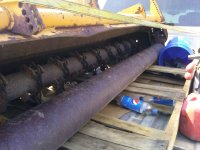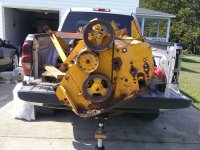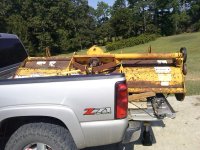IslandTractor
Super Star Member
- Joined
- Sep 15, 2005
- Messages
- 17,101
- Location
- Prudence Island, RI
- Tractor
- 2007 Kioti DK40se HST, Woods BH
Since three-point arms have no down pressure and essentially float anyway, the only advantage I see of a chain type side-link is that the left and right arms become independent of one another. If the tractor is on one plane, the mower could be on another. If a tractor tire drops in a rut the mower will not be compelled to tilt to follow the tractor.
Our ground is flat, so we would see no improvement with the chain links. I set my mower height with the fixed top link and just drop the position control lever all the way down and mow.
That is also my understanding and practice.
Even if one rear tire goes into a hole or rut, the 3PT is still floating although most of the up pressure would be on one arm. As the 3PT arms on my tractor are rated to lift 3000lbs or so as a pair, I'm not too worried about one arm lifting a 700lb flail mower.
I still cannot envision how one would back up with a flail attached with chains instead of solid lower arms. I guess the flail would be pushed by topping lift and PTO and nothing would stabilize it from twisting. Not such a great move IMO as the twisting could cause a rear tire to ride up on the flail and it generally isn't a good idea to pull or push with the PTO. Maybe I am missing something here but I just don't understand the geometry/forces when reversing. I reverse all the time when mowing anything other than an open field so it is not an infrequent occurrence.



